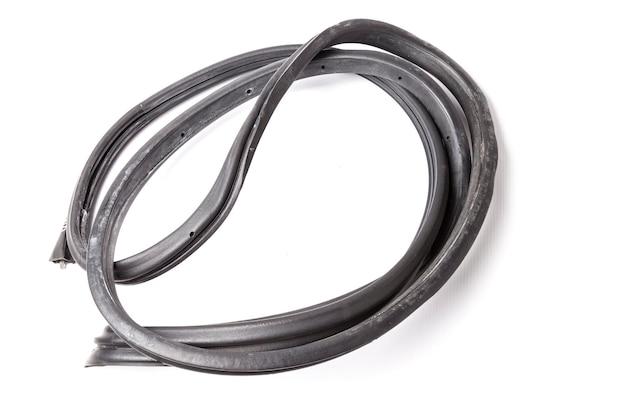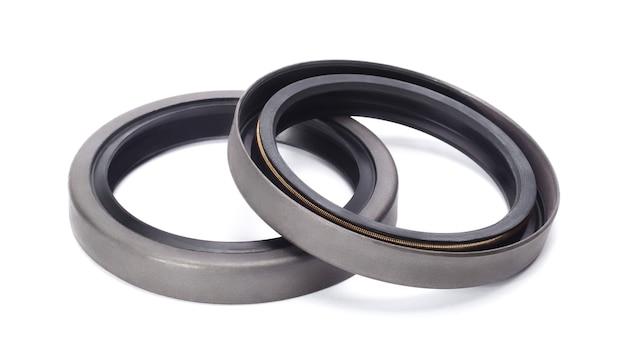Moldy rubber seals on water bottles can be a real nuisance. Not only do they look unsightly, but they can also trap harmful bacteria that can make us sick. Whether it’s black spots or a funky smell, dealing with mold on a water bottle seal is essential for maintaining hygiene.
In this blog post, we’ll explore effective methods to remove mold from rubber seals on water bottles. We’ll cover various cleaning techniques using everyday household ingredients like baking soda and vinegar, without the need for harsh chemicals like bleach. Additionally, we’ll discuss preventive measures to keep mold at bay and answer common questions related to mold and rubber seals.
So grab your water bottle, and let’s dive into the world of mold removal to ensure you have a clean and healthy hydration companion!
How to Banish Mold from Pesky Rubber Seals on Water Bottles
The Mold Misfortune
Ah, the joys of finding mold lurking on your favorite water bottle’s rubber seal. It can feel like a tiny, unwelcome science experiment has taken residence in your drinkware. But fear not, dear reader, for we are here to share with you a secret concoction that will banish those moldy invaders – and leave your water bottle looking and smelling fresher than a field of daisies.
Unleash the Cleaning Arsenal
Before we dive into the mold-busting magic, let’s gather the formidable weapons of our cleaning arsenal. You’ll need:
- Distilled White Vinegar: This multi-purpose superstar dissolves mold like nobody’s business.
- Baking Soda: An odor-absorbing powerhouse that helps eliminate any funky smells.
- Toothbrush: A trusty sidekick for scrubbing away stubborn mold spots.
- Warm Water: The gentle yet effective agent that combines forces with vinegar to achieve mold-free glory.
- Microfiber Cloth: The gentle giant of cleaning tools that will wipe away any residue.
- Rubber Gloves: Shield your hands from the icky mold and cleaning solutions – safety first!
Prepare for Mold-Busting Action!
- Step 1: Assemble Your Cleaning Crew
- Put on your trusty rubber gloves to shield your hands from the wonders-to-come.
-
Prepare a solution with equal parts distilled white vinegar and warm water in a bowl or basin.
-
Step 2: Disassemble and Soak
- Carefully unscrew the lid or cap of your water bottle, removing any attachments or rubber seals.
-
Plop those rubber seals into the vinegar and water solution, giving them a good ol’ soak for about 15 minutes. Pro tip: Use this time to catch up on your favorite TV show or practice your interpretive dance moves; cleaning can be fun!
-
Step 3: Scrub-a-Dub-Dub
- Armed with your toothbrush, unleash your inner cleaning superhero and gently scrub away any remaining mold spots on the rubber seals.
-
Be thorough but gentle, as we don’t want any accidental superheroic toothbrush casualties!
-
Step 4: Rinse and Rejoice
- Grab your newly cleaned rubber seals and rinse them under warm water until all traces of vinegar and mold are gone.
- Give them a pat-dry with a microfiber cloth and let them air dry completely before reassembling your water bottle.
A Mold-Free Future
Now that you have successfully banished the mold from your water bottle’s rubber seals, bask in the glory of your accomplishment. Just imagine yourself, beloved water bottle in hand, confidently sipping away, knowing that only freshness awaits you. Farewell, moldy intruders – you are no match for the cleaning prowess of our secret concoction!
Remember, dear reader, in the ever-ongoing battle against mold, prevention is key. Regularly clean and dry your water bottle’s rubber seals to keep those pesky spores at bay. Cheers to mold-free hydration in the glorious year of 2023!
Stay Fresh, Stay Hydrated!
FAQ: How To Remove Mold From Rubber Seal On Water Bottle
Welcome to our comprehensive FAQ guide on removing mold from rubber seals on water bottles. We understand that dealing with mold can be a pesky and unpleasant task, but fear not! We’ve got you covered with expert tips, tricks, and a dash of humor to make the process a little more enjoyable. So, let’s dive right in!
How do you clean a water bottle with baking soda and vinegar
Cleaning your water bottle with baking soda and vinegar is a simple and effective method. First, mix equal parts baking soda and water to create a paste. Apply the paste to the moldy rubber seal and let it sit for about 15 minutes. Then, scrub the seal with a soft-bristle brush or toothbrush. Rinse thoroughly. Next, mix equal parts white vinegar and water and use this solution to rinse the seal. Voila! A sparkling clean water bottle ready to quench your thirst.
How do you remove black mold from rubber
Black mold on rubber can be stubborn, but fear not, there’s a solution! Start by creating a mixture of one part bleach and four parts water. Put on some gloves and use a sponge or cloth to gently scrub the moldy rubber seal with the bleach solution. Rinse thoroughly and dry completely. Make sure to ventilate the area and avoid inhaling the fumes. Remember, safety first!
How do you clean silicone bottle seals
Silicone bottle seals can be a bit finicky, but we’ve got a trick up our sleeves! Start by removing the seal from the water bottle. Soak it in warm soapy water for about 30 minutes. Then, using a soft cloth or sponge, gently scrub away any mold or residue. Rinse thoroughly with clean water and let it air dry completely before reattaching it to your water bottle. Easy peasy!
How do you remove mold from plastic without bleach
Not a fan of bleach? No worries! You can still tackle mold on plastic with a natural solution. Mix equal parts distilled white vinegar and water in a spray bottle. Spray the moldy area generously and let it sit for about 10 minutes. Then, scrub away the mold using a soft-bristle brush or toothbrush. Rinse thoroughly and dry completely. Vinegar to the rescue!
Does white vinegar damage rubber seals
Not at all! White vinegar is a safe and effective cleaner for rubber seals. It helps remove mold, mildew, and other grime without causing any damage. So you can clean away with confidence, knowing that your rubber seals will stay intact.
Does bleach damage rubber seals
Bleach can be a bit harsh on rubber seals if used in excessive amounts or for extended periods. It’s best to use a diluted bleach solution and rinse thoroughly afterward. Remember to wear gloves and work in a well-ventilated area to minimize any potential damage. Better safe than sorry!
How do you clean an O ring on a water bottle
Cleaning an O-ring on a water bottle is a breeze! Remove the O-ring and wash it with warm soapy water. Use a soft cloth or toothbrush to gently remove any dirt or mold. Rinse thoroughly and let it air dry completely. Once dry, reapply a small amount of food-grade silicone lubricant to keep it in tip-top shape. Your water bottle will thank you!
How do you get mold out of a plastic water bottle
Mold in a plastic water bottle can be a real buzzkill, but don’t fret! Here’s the solution. Start by filling the bottle with a mixture of warm water and a teaspoon of baking soda. Let it sit for about 10 minutes, then give it a good shake to loosen the mold. After that, rinse the bottle thoroughly with clean water. For that extra sparkle, you can use a bottle brush or a soft sponge to scrub away any remaining mold. Cheers to a mold-free hydration!
How do you get mold off a rubber lid
When mold decides to invade your rubber lid, it’s time to show it who’s boss! First, remove the lid and soak it in a solution of warm water and dish soap for about 15 minutes. Then, use a sponge or cloth to gently scrub away the mold. Rinse thoroughly and dry completely. If there are any lingering mold stains, you can also use a mixture of white vinegar and water to give it an extra scrub. Your rubber lid will be looking squeaky clean in no time!
How do I prevent mold in my water bottle lid
Preventing mold in your water bottle lid is easier than you think! After each use, make sure to thoroughly rinse your water bottle and lid with clean water. Allow them to dry completely before reassembling. Avoid leaving your water bottle closed when not in use, as this creates a damp environment perfect for mold growth. Additionally, consider storing your water bottle in a well-ventilated area to discourage any moldy surprises. Prevention is key!
What kills mold
When it comes to killing mold, there are a few popular options. Bleach, hydrogen peroxide, white vinegar, and baking soda all have mold-fighting powers. Each has its own strengths and weaknesses, so choose the one that suits your preferences and the material you’re working with. Remember to always use them in a well-ventilated area and follow the instructions carefully. Say goodbye to mold!
Does vinegar harm rubber
No way! Vinegar is a gentle yet effective cleaner that won’t harm rubber. It’s perfect for tackling those pesky mold spots without causing any damage to your rubber seals or other rubber items. So vinegar away, knowing you’re in safe hands!
Why is there mold in my water bottle
Mold in your water bottle can be quite the mystery, but fear not, Sherlock, we’ve got the answer! Mold loves moisture, warmth, and darkness. If you leave your water bottle closed with some residual moisture inside, you’re creating the perfect environment for mold to thrive. Remember to always dry your water bottle thoroughly after each use to keep that mold at bay. Case closed!
Why does my water bottle have black spots
Black spots in your water bottle can be an unwelcome surprise. These spots are often caused by mold or mildew growth. If you’ve accidentally left your water bottle closed while it was still damp, those sneaky mold spores take advantage of the situation and start a party. To prevent those black spots from crashing your hydration party, make sure your water bottle is bone dry before closing it up. No more unwanted guests!
Is white vinegar and distilled vinegar the same
White vinegar and distilled vinegar are essentially the same thing! They are both made by fermenting distilled alcohol, resulting in acetic acid, which gives vinegar its cleaning and disinfecting properties. So whether you choose white vinegar or distilled vinegar, you’ll have a mold-busting ally in your vinegar arsenal. Vinegar power, activate!
How do you clean a rubber seal on a water bottle
Cleaning a rubber seal on a water bottle is a breeze! Start by removing the rubber seal from the bottle. Soak it in warm soapy water for about 30 minutes. Then, using a soft cloth or sponge, gently scrub away any mold or residue. Rinse thoroughly with clean water and let it air dry completely before reattaching it to your water bottle. Your trusty companion is now refreshed and ready to keep your hydration game strong!
Can you get sick from drinking out of a moldy water bottle
Yikes! Drinking out of a moldy water bottle is like inviting unwanted guests to a tea party. Mold can release spores and toxins that can potentially cause allergic reactions, respiratory issues, and other health problems. So it’s best to avoid sipping from a moldy bottle and conquer that mold ASAP. Stay healthy and hydrated, folks!
And there you have it! Our comprehensive FAQ guide on removing mold from rubber seals on water bottles. We hope this has helped you tackle that pesky mold with confidence and a sprinkle of humor. Remember, a clean water bottle is a happy water bottle. Cheers to a mold-free hydration journey!

